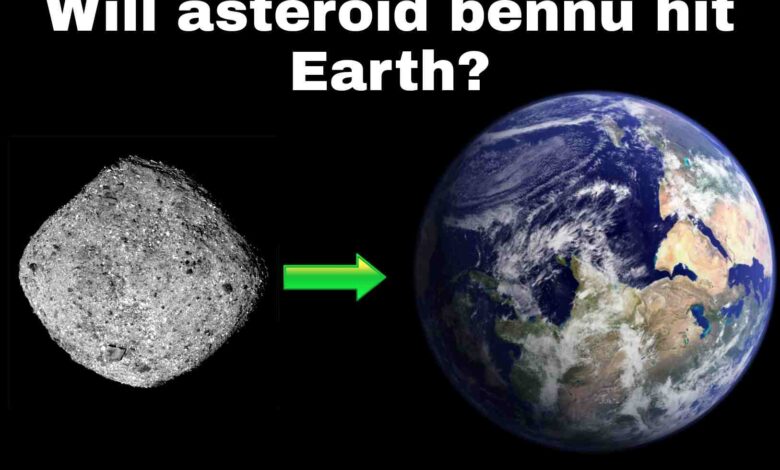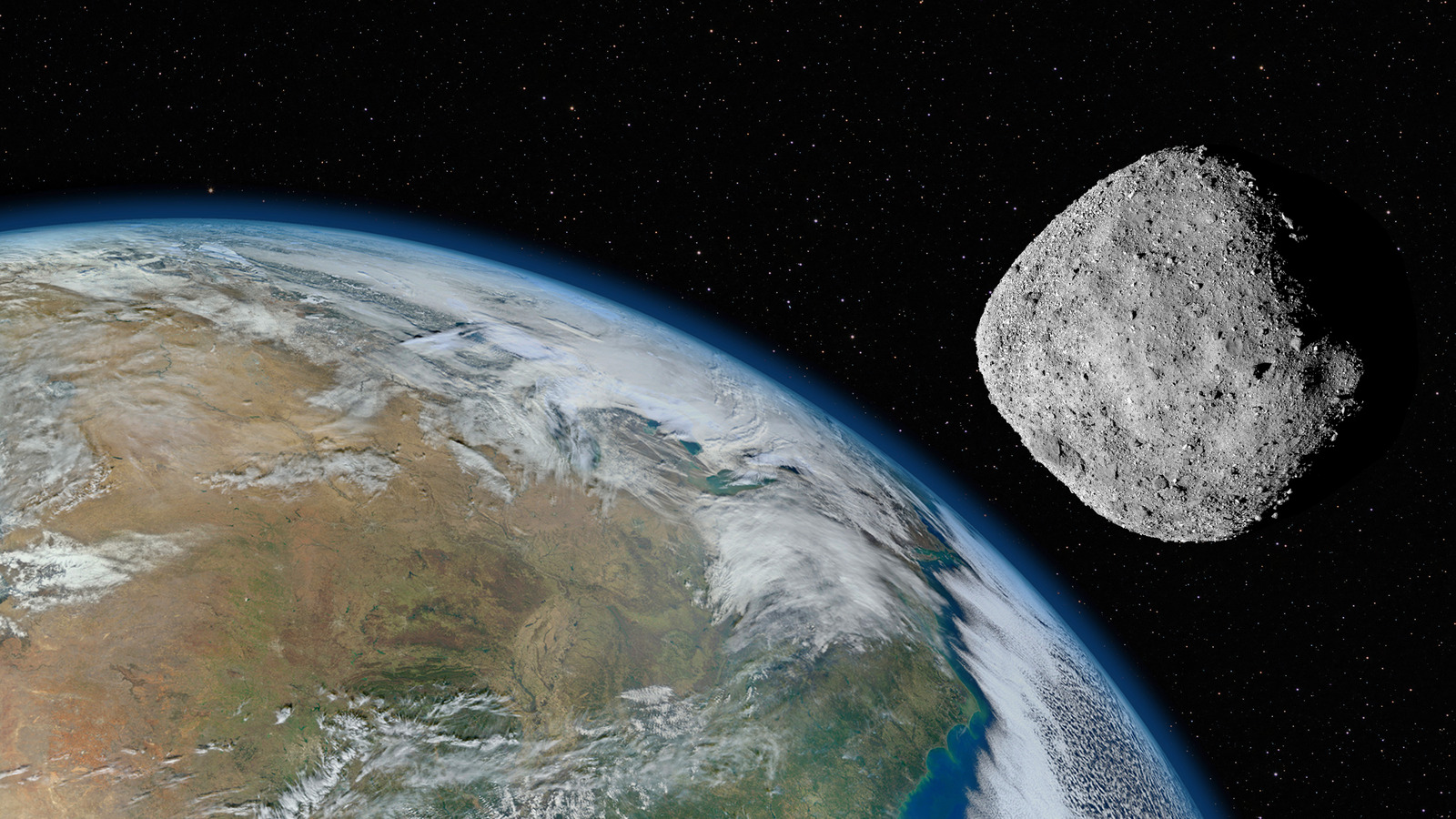Exact Date Revealed! NASA Scientists Predict When Asteroid Bennu Might Collide with Earth, Posing a Threat Equal to 22 Atomic Bombs
NASA Scientists predict that Asteroid Bennu might collide with earth, posing a threat equal to 22 atomic bombs, although the chances seem slim.

Exact Date Revealed! NASA Scientists Predict When Asteroid Bennu Might Collide with Earth, Posing a Threat Equal to 22 Atomic Bombs
In an unprecedented uncovering, NASA scientists have determined the precise day when an asteroid named Bennu, which orbits the Earth every six years, could come into contact with our planet, possibly unleashing a catastrophic impact comparable to 22 atomic bombs. The ominous forecast dates this astronomical menace to strike Earth on September 24, 2182. Although the likelihood of a collision is thought to be 1 in 2,700, experts are not willing to take any chances since the possible implications are too serious to overlook.
Bennu: A Menacing Presence
Bennu, which was found in 1999, is not your typical space rock. This asteroid, about the same dimensions of the Empire State Building, regularly orbits dangerously in proximity to Earth. Associate Administrator Nicola Fox of NASA’s Science Mission Directorate in Washington stated: “Pristine material from asteroid Bennu will help shed light on the formation of our solar system 4.5 billion years ago and perhaps even on how life on Earth began.”
Naming of asteroid Bennu- Its original designation was 1999 RQ36. It was in 2013 that the name was changed to Bennu after a third-grade student named Michael Puzio won a contest to name the asteroid. With a width of approximately one third of a mile, Bennu is approximately half as large as the asteroid which is considered to have killed the dinosaurs. Bennu is not large enough to wipe out life on Earth, but if the planet collides with it, there is going to be destruction up to 600 miles away from the crash site.
NASA’s Seven-Year Odyssey to Avert Disaster
NASA launched the OSIRIS-REx mission more than seven years ago to avert this impending calamity, and it is now getting closer to completion. In 2020, the spacecraft set out on a risky journey to Bennu, where it touched down on the surface as well as collected rocky material from a chosen sample site under the name Nightingale in a daring “Touch-and-Go” manoeuvre. The samples collected point to the prospect of solving the puzzles surrounding the birth of our solar system as well as the early stages of life on Earth.
Bennu’s collision route with the asteroid has been detoured according to plans developed by NASA. The final leg of their mission is currently underway. The work that has been done to redirect it was described by Richard Burns, project manager for OSIRIS-REx at NASA’s Goddard Space Flight Center in Greenbelt, Maryland.
He said: “We are now in the final leg of this seven-year journey, and it feels very much like the last few miles of a marathon, with a confluence of emotions like pride and joy coexisting with a determined focus to complete the race well.”

The Countdown Begins: Return of the Capsule
The expected return of the capsule containing the priceless Bennu samples is eagerly anticipated as the OSIRIS-REx mission draws to its conclusion. The OSIRIS-REx mission’s asteroid samples will arrive on Earth the following week, entering the atmosphere on Sunday about 3.42 pm BST. The OSIRIS-REx spacecraft will shoot a capsule about the measurement of a refrigerator that will carry the samples to Earth once it has traveled 63,000 miles from the surface of the planet. Then, it will approach Earth at a speed of around 28,000 mph as well as at a temperature double that of lava.
Parachutes are going to be used to slow the capsule to 11 mph before it touches down in the Utah desert, allowing it to land securely at the Department of Defense’s Utah Test and Training Range southwest of Salt Lake City. The rescue crew must swiftly remove the capsule from the ground in order to prevent contaminating the Bennu samples. In addition to possibly saving the world from a devastating collision, the mission’s findings may also reveal information regarding the beginning of life on Earth.
Echoes of Hollywood: A Race Against Time
The OSIRIS-REx mission’s sense of urgency brings to mind the suspenseful plot of Bruce Willis’ 1998 blockbuster movie “Armageddon,” which also features a sense of urgency. The protagonist of the film, played by Bruce Willis, leads a group of astronauts on a mission to split a massive asteroid in two by means of a nuclear explosion, sparing civilization from annihilation. Even though real-world situations might not have the dramatic tension of movies, the stakes are still very high, as well as NASA’s scientific endeavours stand as our best chance of preventing Bennu’s potentially catastrophic effects.

The Bennu Conundrum: Odds of Impact and Earth’s Defence
Bennu’s return in the OSIRIS-REx capsule with precious samples from it has the world’s attention, but concerns about the possibility of Bennu colliding with Earth in the future loom. Why is September 24, 2182 always brought up when talking about this cosmic threat? In this follow-up, we delve into the evolving odds of impact and the ongoing efforts to defend our planet from potential threats.
Odds of Impact: A Calculated Risk
Bennu has been selected as the primary goal of NASA‘s OSIRIS-REx mission for a number of reasons, including the availability of radar data as well as telescopic observations as well as the fact that it was one of the planets most likely to experience a collision with the Earth. The likelihood of such an event happening between 2175 and 2199 was previously estimated at 1 in 2,700.
Bennu’s 500-meter width can release 1,200 megatons of energy during an impact, which is more than twenty-four times as much energy as the most potent nuclear bomb ever created by humans. It’s crucial to remember, though, that this collision would be significantly less disastrous than the gigantic 9.7 km (5.6 mi) asteroid that wiped out the dinosaurs.
Precision in Predictions: OSIRIS-REx’s Contribution
After nearly two years of careful study, NASA has improved its impact estimates as well as learned vital information about Bennu’s orbit. Davide Farnocchia, the primary author of the study and a researcher at the Center for Near-Earth Object Studies (CNEOS), said, “The OSIRIS-REx data give us so much more precise information; we can test the limits of our models and calculate the future trajectory of Bennu to a very high degree of certainty through 2135.”
Unfortunately, the chances have changed little, with a one in 1,750 possibility that an impact will be felt by the year 2300. In accordance with NASA, the date of an impact is still September 24, 2182, which has a 0.037 percent possibility. To put it into perspective, imagine rolling a dice; you have a one out of six chance of receiving a 6, but the likelihood increases as you roll the dice a greater number of times.
Bennu’s Not Alone: Hazardous Asteroids and Earth’s Defence
Bennu is one of the two known asteroids in the solar system as a whole that NASA considers to be the most dangerous, along with 1950 DA, even though the likelihood of it hitting with Earth is quite low. A vital component of Earth’s defence against prospective asteroids is the vigilant monitoring of “near-Earth objects” (NEOs) 140 meters in size or greater. We may rest easy knowing that, according to NASA, “no known asteroid larger than 140 meters in size has a significant chance to hit Earth for the next 100 years.” However, as our knowledge of orbital dynamics advances, so does the way we evaluate risk over longer time horizons.
Assessing Future Threats: A Glimpse into the Next Millennium
Researchers have used cutting-edge techniques to more accurately assess the risk of effect across long time periods. Researchers have made significant progress in identifying potentially dangerous NEOs by examining the Minimum Orbit Intersection Distance (MOID), which determines the closest interactions between asteroids and Earth. With the most likely candidate, 7482 (1994 PC1), having a minuscule 0.00151 percent chance of a close encounter, approaching Earth closer compared to the Moon’s orbit, the likelihood of an asteroid hit before the year 3000 appears to be very low.
Despite these encouraging figures, the danger posed by unidentified celestial objects is still a worry. Both the United States as well as China continue to be working on ideas to divert asteroids away from Earth via rocket strikes in anticipation of any future threats. NASA recently set a record by successfully diverting an asteroid through the collision of a probe, demonstrating our ever-evolving capacity to shield our world from the wonders of space.
The world watches with a mixture of fascination as well as vigilance as OSIRIS-REx’s capsule returns, marking an important step in understanding and mitigating cosmic threats. We know that our combined efforts and scientific endeavours are crucial in protecting Earth from the unknowns which roam the celestial frontier. As the clock ticks down to the final stages of NASA’s mission to divert Bennu from its collision course with the planet Earth, the significance of this expedition cannot be over emphasized. While the odds of an impact may be slim, the consequences are too grave to be ignored or disregarded.
The samples soon to return from Bennu hold the potential to unlock the secrets of our solar system’s origins as well as the birth of life on Earth. As the world watches with bated breath, we are reminded of humanity’s capacity for scientific exploration as well as innovation, which may yet protect us from the cosmic dangers which lurk in the depths of space.





